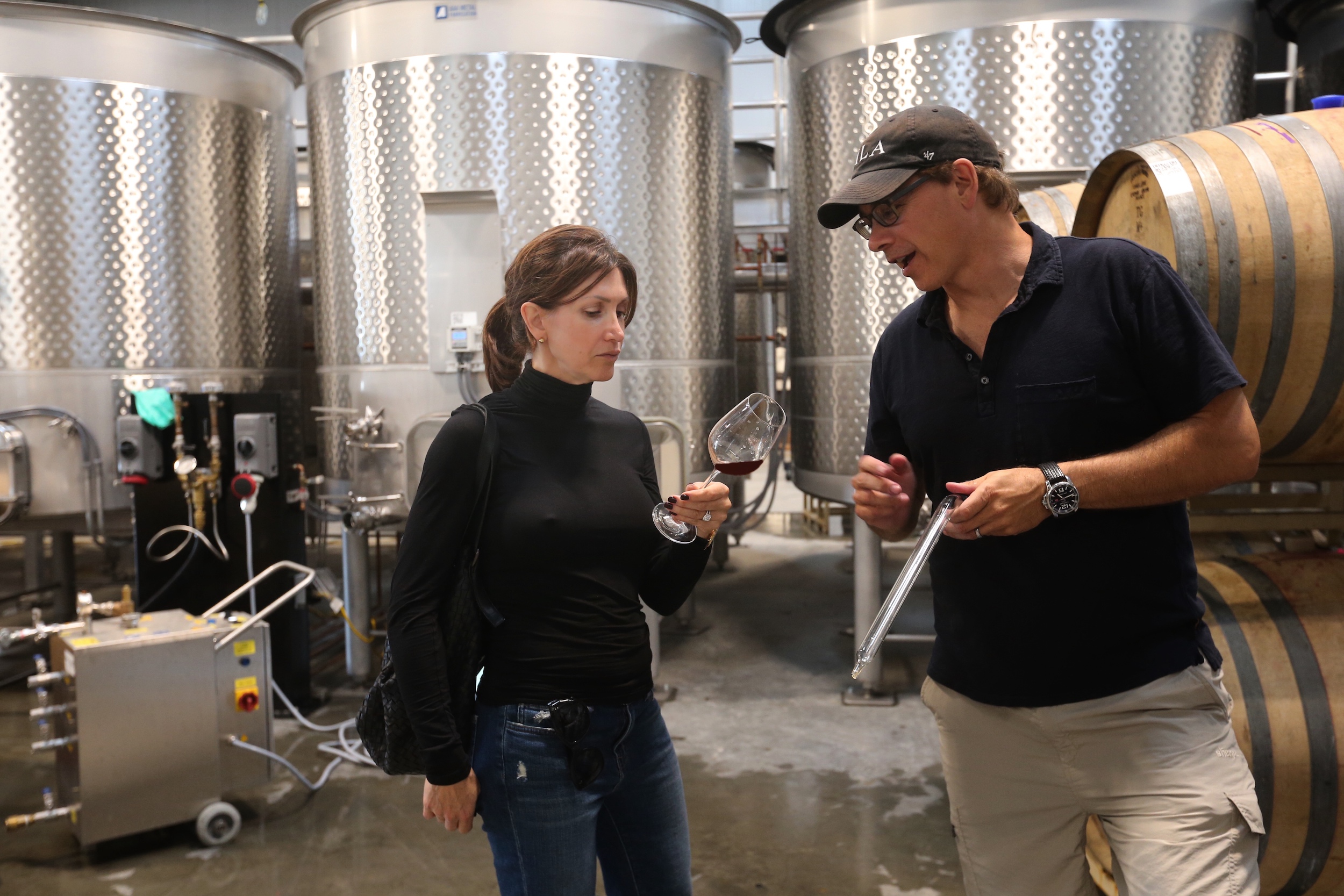new year, new blends
Dear Friends,
We applaud those of you who are near the finish line of a “dry January.” We would join you if we could!
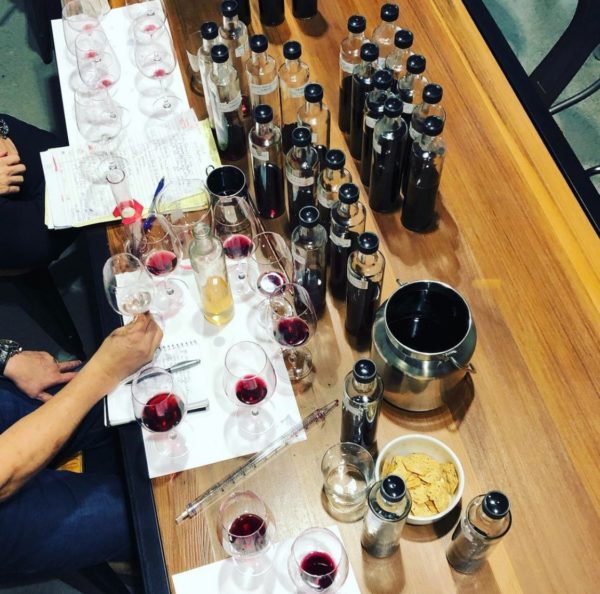 Instead, we spent part of our January sitting at a table in Sonoma facing 50 bottles of wine. Because it’s time to select our blends. This is not a matter of simply dumping barrels together into vats. It’s a two-day-long tasting marathon, twice a year.
Instead, we spent part of our January sitting at a table in Sonoma facing 50 bottles of wine. Because it’s time to select our blends. This is not a matter of simply dumping barrels together into vats. It’s a two-day-long tasting marathon, twice a year.
We first sample every barrel in our cellar, deciding which wines to keep and which to sell (or set aside for other projects). Then we determine the quantities we want in each final bottling.
For our Cabernet Sauvignon and Grenache, we simply choose the barrels we like best. Our cuvées, like our Luca’s and Roco’s Blends, require more work, as we test out different combinations of grape varieties. We’re going for specific flavor profiles with these vintage-driven wines, so their percentages of Syrah, Grenache, and other grapes vary from year to year.
After hours of tasting, we experience palate fatigue—everything begins to taste the same—and we break until the following day. Even our consulting winemakers, longtime pros Steve Beckmen and Kian Tavakoli, need to give their tastebuds a rest.
We’re a solid team during our January tastings. Kian and Steve, of course, have years of professional experience under their belts. Loretta has a keen sense of smell and taste, and her strong culinary background enables her to identify aromatics with pinpoint precision. Michael, for his part, has archived sensory memories of past Mila vintages—not to mention the greatest wines of the Rhône and Priorat—and can compare our blends with these benchmarks as we work.
Tasting through 50 wines might sound like fun, but it’s exhausting, and it falls during a month when we’d rather be doing, say, a juice cleanse.
But we wouldn’t have it any other way.

from loretta’s sonoma table
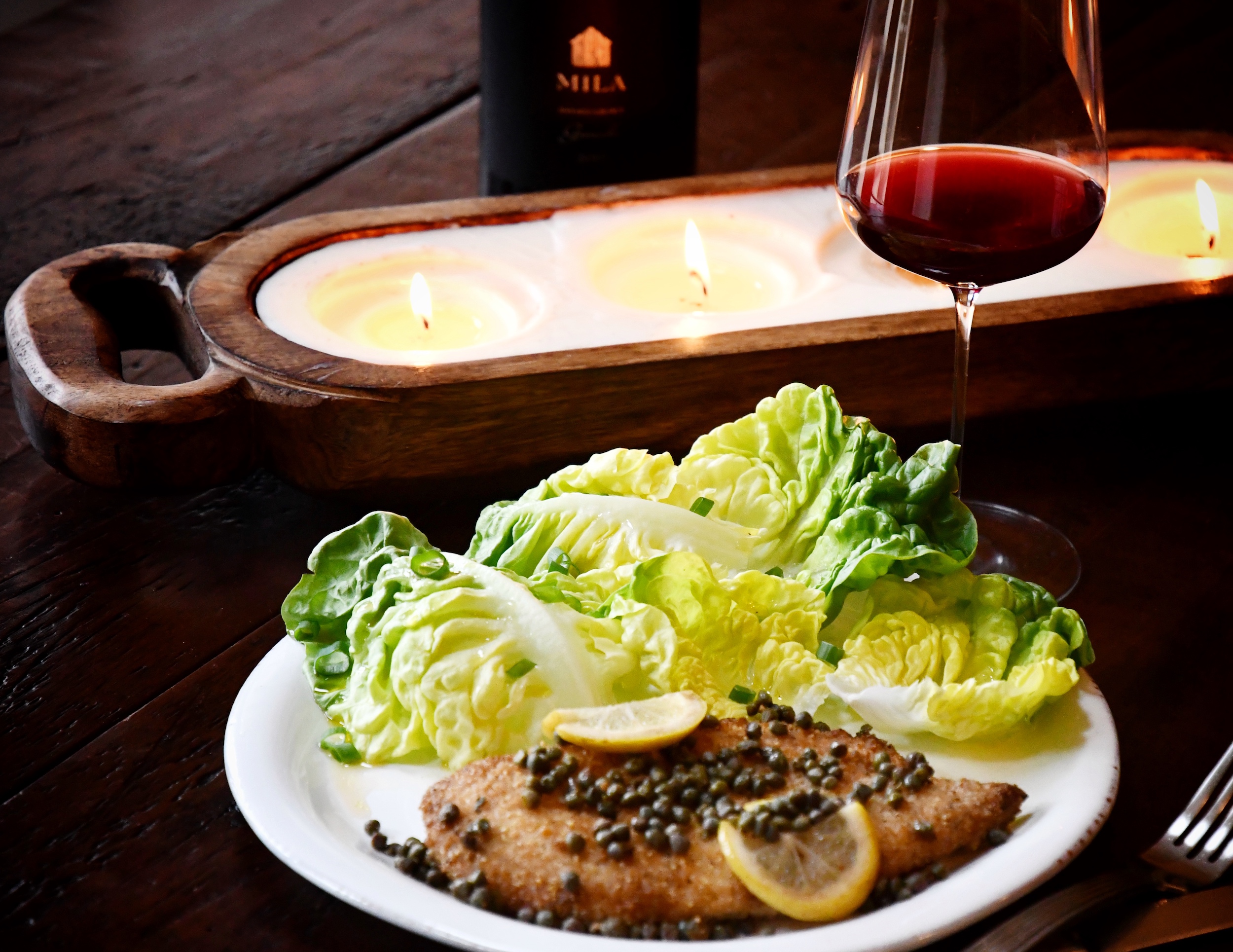
bistro ralph’s chicken paillard
For 13 years, our favorite local haunt in Sonoma was the bar at Bistro Ralph, a downtown Healdsburg institution where we would enjoy a glass of wine with crisp pommes frites and Chef Ralph’s delicious Chicken Paillard.
Sadly, in 2016, after 24 years in business, Bistro Ralph closed. We have missed Ralph’s Chicken Paillard ever since, so I was thrilled to find his signature recipe recently in Sonoma Magazine. It’s now a family favorite in our home, and—it turns out—a delicious accompaniment to our 2017 Grenache!
For a printer-friendly version of the recipe, click here: RECIPE
Ingredients:
2 cups unseasoned breadcrumbs
½ cup polenta
4 boneless, skinless chicken breasts
kosher salt, to taste
black pepper, to taste
6 heaping tablespoons clarified butter
½ cup capers, drained
⅓ cup lemon juice
8 very thin lemon wedges, optional
Directions:
Combine the breadcrumbs and polenta in a wide dish or bowl and set aside.
Using a meat tenderizer, a rubber mallet, or a rolling pin, pound the chicken breasts until they are quite thin, about ⅛ inch. Salt and pepper both sides of each chicken cutlet.
Dip chicken into breadcrumb-polenta mixture, pressing lightly to create an even crust on both sides.
Set a heavy skillet over high heat and add the butter. When it begins to turn golden, add the chicken. Sear for about 30 seconds, until the chicken begins to brown; flip it over and sear for 30 seconds more. Add the capers, lemon juice, and lemon wedges, if using. Fry for a few more seconds, then transfer to warmed plates and enjoy.
Serves 4.
notes from the vineyard:
pruning & training
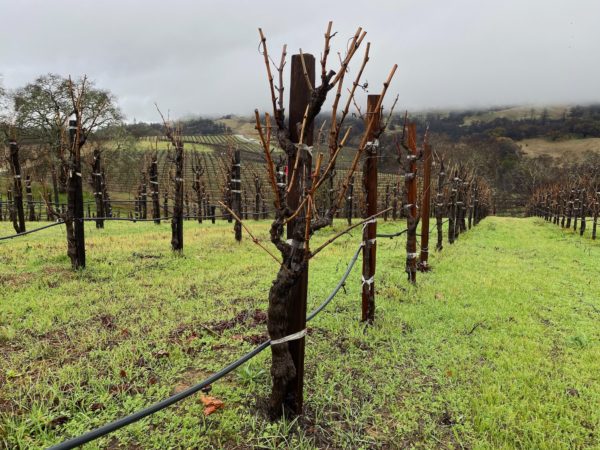
Our head-trained Grenache after pruning.
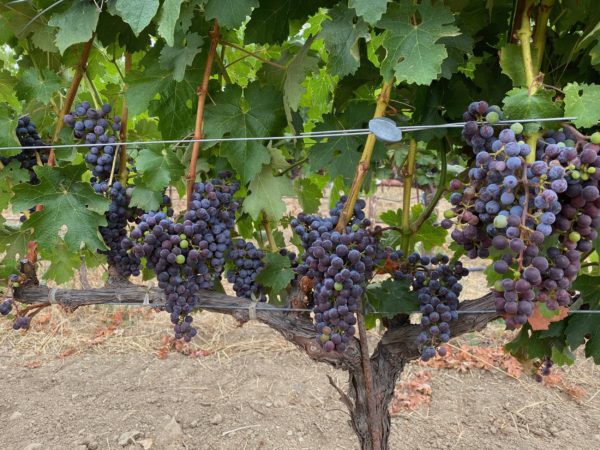
Our Cabernet Sauvignon, in double-cordon configuration.
Winter is pruning season. The plants are dormant, so it’s the best time of year to shape each vine.
We’ve made a name for ourselves by planting head-trained Grenache and Carignan at our wine farm. Head training, also called bush training, is the oldest style of canopy management, dating back to antiquity.
 In California, you can still see head-trained Zinfandel and Petite Sirah vines that are a century old, or even older. In the winter, their thick, gnarled trunks can look like something out of a creepy fairy tale. (This photo is from UC Davis.)
In California, you can still see head-trained Zinfandel and Petite Sirah vines that are a century old, or even older. In the winter, their thick, gnarled trunks can look like something out of a creepy fairy tale. (This photo is from UC Davis.)
But it’s not very often that you see young vineyards planted this way—in fact, we don’t know of any others like ours in Sonoma. The above left photo shows young head-trained Grenache vines at our wine farm; over time, their trunks will thicken and twist.
We prune our head-trained vines so that eight canes grow upward every spring. The trunks lean on stakes, but eventually, they’ll be able to hold up their own weight—quite a feat for a vine that typically climbs up trellises.
Our Cabernet Sauvignon and Syrah vines look much more typical. We have trained them to a trellis, in a bilateral or double cordon configuration (see photo above right). That is, an arm grows horizontally from each side of the main trunk, supported by a trellis wire. We spur prune each cordon over the winter so that four shoots grow vertically from each cordon.
This careful training should ensure balance—not too many leaves, sufficient sun and wind exposure—in each grapevine, allowing our fruit to ripen fully and deliciously in early autumn.
notes from the cellar:
we’ve hatched an italian egg
Our newest assistant in the Mila cellar is an Italian, about 7 feet tall, and already hard at work. It’s a modern-day amphora, fitted with stainless steel components but made from a material that has been around since the age of ancient Rome. Cocciopesto, which roughly translates to “earthenware,” is durable and natural, composed of Italian stone, sand, marl, and terra cotta.
There’s a reason why amphorae worked so well as fermentation vats back in antiquity, and in recent years, wineries have been bringing back this classical vessel’s egg-like shape.
Today, winemakers typically crush grapes in large cylindrical steel tanks. The skins and seeds float to the top of the tank, creating a cap. To encourage fermentation and ensure that the wine soaks up pigment, flavor and tannins from the skins and seeds, the winemaker must continually punch down, pump over, or even get in the tank barefoot and tread on the cap.
By contrast, the narrow neck of the an “egg” fermenter forces the cap to stay submerged in the juice, reducing the need for “punch downs.” And with no corners or flat surfaces to settle in, liquid and sediment stay in constant motion during fermentation.

We like the minerality and the texture of wines fermented in concrete and terra cotta vessels, so we’re trying out our own Italian egg—identical to the lighter one shown in this photo—this year. Approximately 1,000 liters (264 gallons) of our 2020 Block II Grenache fermented in it, and we’re tasting the results right now as we work on our blends.
We’ll let you know when we release these wines… We can’t wait to hear what you think of them!
2021 events
Apr. 1: Wine Auction benefiting the Marco Island Center for the Arts, Marco Island, FL
Aug. 20: Winemaker Dinner, Firestone Country Club, Akron, OH
Oct. 22-23: Gran Fondo Hincapie Celebrity Chef Dinner, Hotel Domestique, Travelers Rest, SC
Nov. 4, 2021: T.J. Martell Foundation Best Cellars Dinner, Cleveland, OH
Or: Book a private tasting at our Sonoma winery. (Contact Jen at 440-388-4218 to arrange your appointment.)
